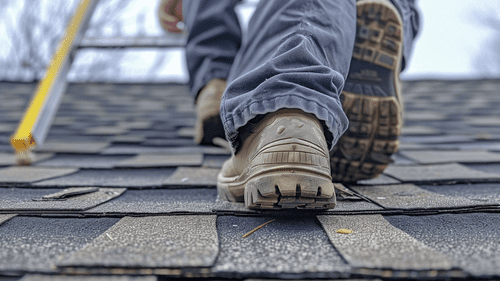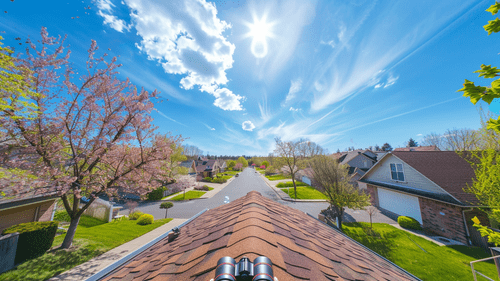Introduction
When was the last time you took a good look at your roof? It's easy to overlook the shield that protects you from the elements, but its upkeep is crucial for your home's integrity and value. Different roofing materials have varying lifespans, and knowing when to replace them can save you from future headaches and financial strain. This guide will walk you through the lifecycles of common roofing materials, helping you understand when a replacement might be necessary and what signs to watch for.
Have you ever wondered if those small imperfections in your roof are just cosmetic, or a sign of a deeper problem? From asphalt shingles to wood shake, each material has its own aging signs and maintenance needs. By recognizing these early symptoms and understanding the potential risks of delaying roof replacement, you can take timely action that ensures your home remains safe and visually appealing, while also managing costs effectively. Let's explore how to keep your roof in top condition and when to consider making a change.
Understanding Roof Lifespans and Materials
Lifespan of Common Roofing Materials
Asphalt shingles are a popular choice for roofing due to their cost-effectiveness and ease of installation. The lifespan of asphalt shingles typically ranges from 15 to 30 years. Factors such as climate, roof color, roof slope, and ventilation can significantly influence their durability. For instance, roofs in areas with high temperatures or extreme weather conditions may experience a shorter lifespan due to increased wear and tear. Regular maintenance can extend the life of an asphalt shingle roof.
In contrast, wood shake roofs are known for their rustic aesthetic and can last about 30 years if properly maintained. Fiber cement shingles, on the other hand, have a lifespan of approximately 25 years. Each material requires specific maintenance strategies; wood shakes need treatment for moisture and insect resistance, while fiber cement benefits from periodic painting to maintain its structural integrity and appearance.
Expert Recommendations on Roof Inspections
Experts recommend that roof inspections become a routine part of home maintenance, especially after the halfway mark of the expected lifespan of the roof. For example, if an asphalt shingle roof is expected to last 20 years, it should be inspected every three to four years once it reaches the 10-year mark. This practice helps in identifying potential issues that could shorten the roof's lifespan and ensures timely interventions.
Early Signs of Roof Aging
Visual Indicators of Roof Wear
The first signs of roof aging are often visually observable. Homeowners should look out for:
- Curling or buckling shingles
- Missing granules which expose the roof felt
- Cracked or broken tiles
- Rust on metal parts
- Moss or algae growth, which can indicate trapped moisture
These signs often suggest that the roof material is failing to protect the home effectively from the elements, and may require repairs or replacement.
Structural Signals of Aging
More subtle than visual signs are structural changes, which can be indicative of serious issues. A sagging or uneven roof line might suggest a compromised roofing structure or water saturation in the decking, which is often more expensive to fix. It's crucial to address these signs promptly to prevent further damage.
Internal Evidence of Roof Problems
From inside the home, several indicators suggest that the roof may be failing:
- Water stains on the ceiling
- Damp insulation in the attic
- Daylight visible through the roof boards
These signs typically indicate leaks that could lead to more significant damage if not addressed quickly.
The Impact of Neglecting Roof Replacement
Short-term Consequences
Ignoring the need for roof replacement can lead to immediate problems such as leaks during rainstorms, which can damage the interior of your home. Additionally, a deteriorating roof often leads to a decline in the aesthetic appeal of your home, potentially lowering its curb appeal and market value.
Long-term Risks
Over time, the risks associated with postponing roof replacement grow significantly. Persistent leaks can lead to structural damage, including rotted framing and sheathing, ruined insulation, and mold and mildew growth. These issues not only compromise the structural integrity of the home but can also create unhealthy living conditions.
Cost Implications
Delaying roof replacement can also be financially burdensome in the long run. Minor leaks can turn into major problems that are much more expensive to fix. Moreover, a failing roof can increase heating and cooling costs as it typically lacks proper insulation and ventilation.
Optimal Timing for Roof Replacement
Age-Based Replacement Guidelines
Knowing the typical lifespan of your roofing material is crucial in planning for replacement:
- Asphalt Shingles: 15-30 years
- Wood Shake: Around 30 years
- Fiber Cement Shingles: Approximately 25 years
These timelines serve as general guidelines, but actual lifespan can vary based on several factors including installation quality, climate, and maintenance.
Condition-Based Decisions
While age is a helpful indicator, the condition of the roof should also guide decisions regarding replacement. Regular inspections can help identify issues that might not be evident from the ground or to an untrained eye, allowing for early intervention that can prolong the life of the roof.
Professional Assessments
Professional roof inspections are invaluable in determining the actual condition of a roof. These assessments can uncover hidden damage and provide a more accurate estimation of the roof's remaining lifespan. Professionals can also offer advice on whether repairs or replacement are more cost-effective based on the specific condition of the roof.
By understanding the lifecycle of roofing materials and recognizing the early signs of deterioration, homeowners can make informed decisions about roof replacement, ensuring their home remains protected and their financial investment secure. Regular professional assessments play a crucial role in this process, providing the expertise needed to maintain the roof's integrity over time.
Wrapping Up: The Roof Over Your Head
Understanding the lifecycle of your roofing materials involves safeguarding your home and ensuring your peace of mind. We've discussed the typical lifespans of popular materials like asphalt shingles, wood shake, and fiber cement, and emphasized the importance of regular inspections, especially as your roof ages. Recognizing early signs of wear—whether visual, structural, or internal—can prevent minor issues from escalating into costly repairs, ensuring your home remains both safe and aesthetically pleasing.
Neglecting roof replacement can lead to immediate inconveniences and long-term damage, affecting everything from your home's structural integrity to its market value. By staying proactive about roof maintenance, you protect your investment and enhance your living conditions. Remember, a well-maintained roof reflects the care you invest in your home. Let's not wait for a leak to remind us of the roof's importance—after all, it protects your sanctuary.







